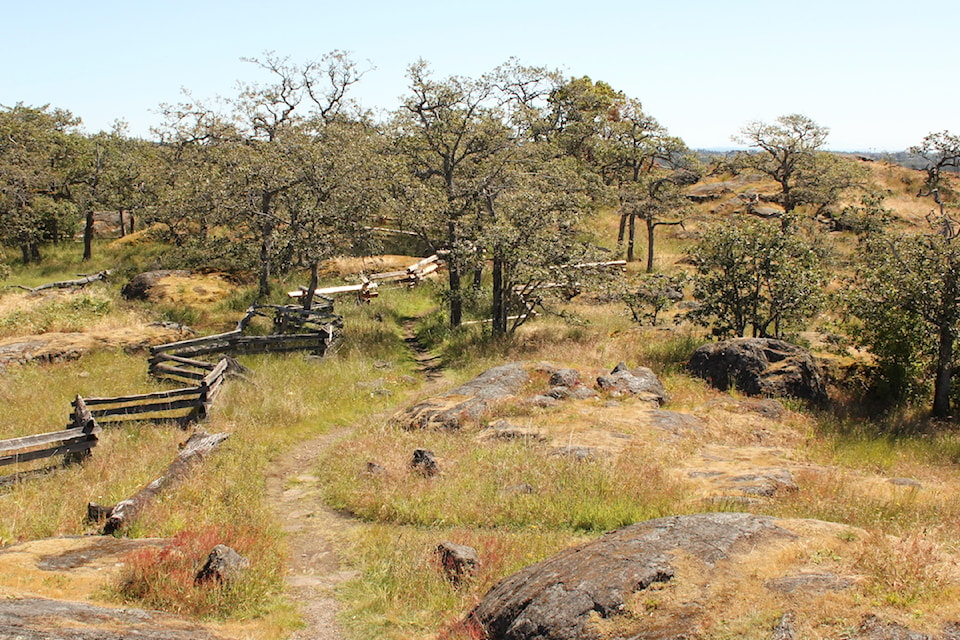The new Biodiversity Conservation Strategy (BCS), recently approved by Saanich council, ignores the comprehensive programs put forward by the Resilient Saanich Technical Committee (RSTC). Council put the RSTC in place to advise on these issues. The RSTC recommended the following comprehensive programs; a private land stewardship program, a species-at-risk management program, new ecosystem mapping to replace inaccurate mapping, and a comprehensive ecosystem restoration program. This last program would include significant access restrictions in Saanich parks to protect special ecosystems. Mapping would include ecological condition assessment, to determine restoration needs for each park.
Instead of the bold vision and comprehensive programs recommended by the RSTC, the strategy provides tinkering around the edges, with only minor adjustments to existing programs. For example, in the BCS implementation plan, it is indicated under the item “Continue to protect and restore Garry oak ecosystems on public lands” that “Saanich will continue to support existing restoration sites and the Pulling Together Program”. No new funding is proposed.
Large areas of Garry oak ecosystems in Saanich parks are severely degraded. Using existing resources and not requesting significant funding for restoration in Saanich parks will not be effective. The RSTC indicated in their latest letter to council that “current budgets devoted to biodiversity conservation and the maintenance of ecological health of Saanich Parks is woefully inadequate.” Saanich provides $29 per citizen funding for its parks system, while Kelowna, a jurisdiction similar in size, provides $173 per citizen to its parks system.
An assessment of 18 major parks in Saanich, by a member of the RSTC and myself, found that most, if not nearly all, natural area parks are covered with invasive species, and severely degraded by overuse, due to limited access restrictions. Bold actions will be required to restore these globally imperiled ecosystems. Significant resources are required, not the limited amounts that are indicated in the BCS implementation plan.
The RSTC indicated in an August 2023 document that “Our parks are a good example where the internal ecosystems are not protected from either overuse by people or from being overwhelmed by invasive plants, especially invasive grasses. These impacts occur in the absence of active management of these areas and are very seriously threatening the values that the parks are meant to protect.” Bold action is necessary!
A group of Pulling Together volunteers provided a presentation to Saanich council in March 2023, indicating that Saanich parks are in “crisis” and that the Pulling Together program cannot deal with the significant areas of invasive species in Saanich parks, including up to 30 species of invasive grasses in Garry oak ecosystems.
A group of UVIC professors in May 2024 wrote to Saanich council regarding the strategy and indicated that: “Saanich must also place significant effort on effective protection and restoration,” and that “many of the beautiful parks in the district are experiencing intense pressure from invasive species and high levels of recreational use.”
Saanich does not have a species-at-risk management program. There is no mention of the need for a comprehensive species-at-risk management program in the Biodiversity Strategy. There are many species at risk in Saanich parks, many whose numbers are rapidly decreasing. Saanich staff stated that Saanich follows ‘Best Practices’ in terms of species at risk management, and presumably, ecosystem restoration, however, both are critically underfunded.
The group of UVIC professors went on to write that “Given the rich biodiversity in this region, and in the District of Saanich, we are in need of a cohesive, comprehensive species-at-risk management program across the district.” Why is this missing from the strategy and plan?
There may still be time and an opportunity to reassess the RSTC comprehensive programs which could be brought forward into the implementation plan. Otherwise, the ecosystems in Saanich’s parks system will continue to become more and more degraded, and our species at risk will continue to decline.
Ted Lea
Saanich

